Minor Oak is halfway through fit-out. The walls are going up. The plumbing is going into the walls. I’ve sent the plans to a few people for feedback, but I haven’t talked about the design or published it on this blog. Now seems like a good time, but first, a few words on where the design came from.
(If you’re impatient to see the plans and stills of the 3D model, then scroll down.)
Changing the Structure of Work
Ann Arbor’s Workantile was the first coworking space I was aware of, but I’ve been interested in the structure of work for a long time.
As a work-study student at the University of Michigan School of Architecture, I was a team member on a workplace design study. It made me aware of physical design issues that affect wellbeing and productivity in office environments. I’ve been fascinated by those issues ever since. They have a huge impact on quality of life, but are too often neglected by employers.
The internet-based culture of freelancing and entrepreneurship is helping people to live more balanced lives by providing infrastructure for more flexible ways of working. Of course, there’s also the joy of creating your own job and doing the kind of work you want to do, taking control of your destiny and making your passion your work – or doing work that leaves room in your life for what you really love.
Coworking spaces provide the support and community independent workers need to stay motivated, stay busy, celebrate the best times and turn challenges into opportunities.
Coworking Spaces: What’s Missing?
Coworking spaces are wonderful, but they’re not perfect. They’re part of a new way of working, and it’s up to all of us to fine-tune the concept.
I’ve been DIYing almost everything about Minor Oak: the business plan, website, preliminary branding, networking, publicity, social media, accounting… I’m even working on a booking system based on an open source scheduler. But the most fun and interesting part of this has been the design of the space.
My Pinterest account is full of pictures of coworking spaces. Almost all of them are divided up into open hotdesking areas and meeting rooms. Last year, Teresa Jackson, owner of Glasgow’s Collabor8te, and I discussed the need for other types of work areas: places for quiet work and private phone conversations as well as the more dynamic, collaborative areas. The design for the new Collabor8te is based on those ideas, and so is the design for Minor Oak.
The Minor Oak Coworking Space Design
The space that Minor Oak will occupy has helped shape the design; I jumped at the opportunity to lease it both because of its character and its potential to accommodate the concept. In my last post, I talked a little about the space and its history.
Sneinton Market Unit Six’s key feature is a pre-existing mezzanine. It’s the perfect place for a quiet work area, and it provides a ceiling for private, enclosed spaces below.
The quiet work area on the mezzanine will have a cork floor, cork board on the walls and fabric draped at the ceiling level, all working to soften the acoustics. Downstairs, there will be a collaborative area for people who’d rather be in a more interactive environment and for groups who want to work together, but don’t need the privacy of the meeting room.
Two isolation pods will be located under the mezzanine; they can be used for work that requires intense concentration and for private phone calls, as well. There will also be a standing phone booth by the stairs. The back rooms will have mail lockers for members, washrooms, and a storage area. A kitchenette with free coffee, tea and snacks will be out front.
Here’s a diagram of private to public work areas; members will be able to move between them during the day.
Finally, the large ground floor space will be both collaborative and flexible. All the furniture there will be foldable, stackable and stowable. During work hours, it will be a coworking area. In early mornings, evenings and weekends, it can convert into a venue for events and presentations, a space for training and workshops, an art gallery and an exercise studio. The quiet work area upstairs will be available to key-holding members 24-7.
I’ve built a 3D model, as well. I’m planning to develop more detailed renderings and a walk-through, but for now, here are a few snapshots.
The furniture may not be exactly as pictured, but it’s enough to get the idea across, I think.
Well, there it is. Decorating ideas are welcome, but the plan is solid now. What do you think?


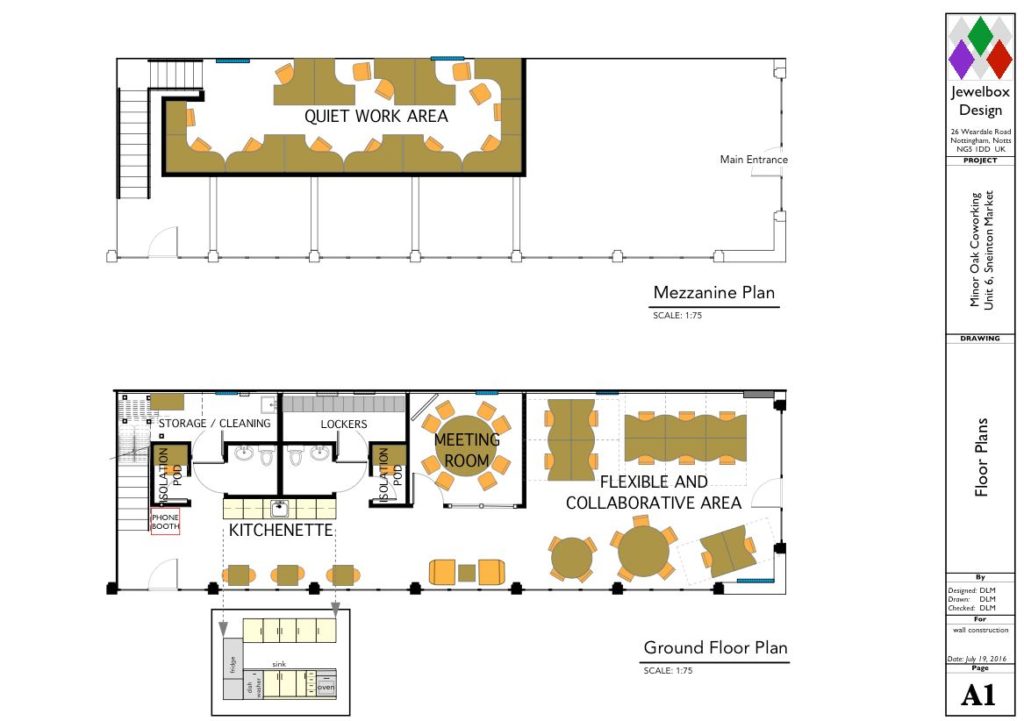
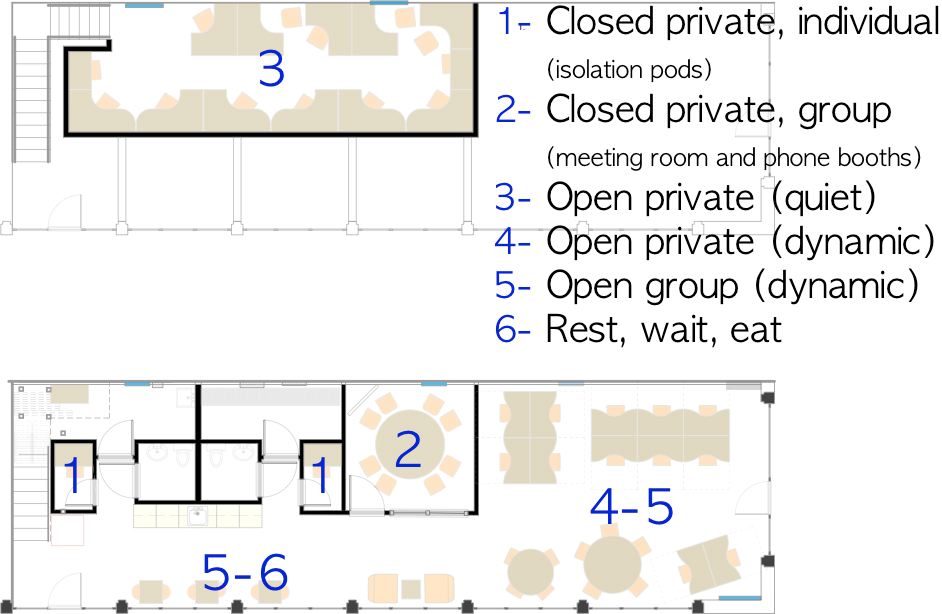
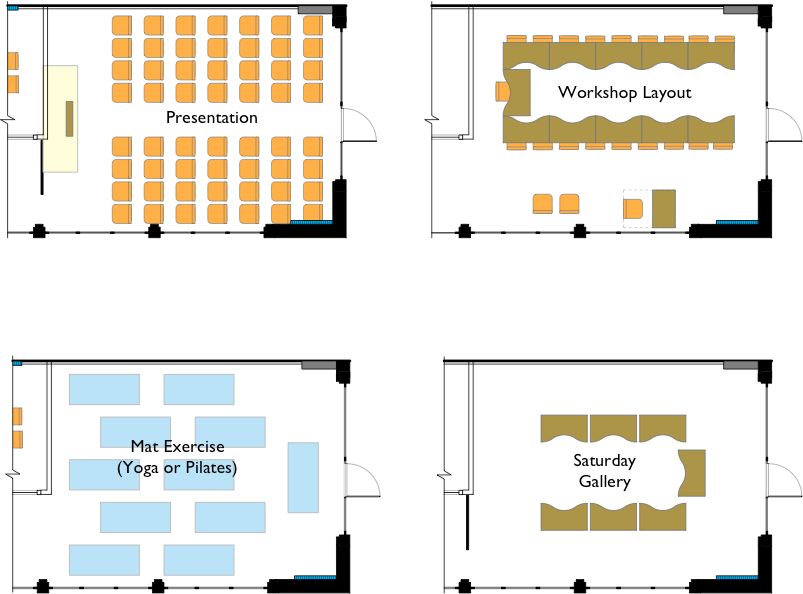
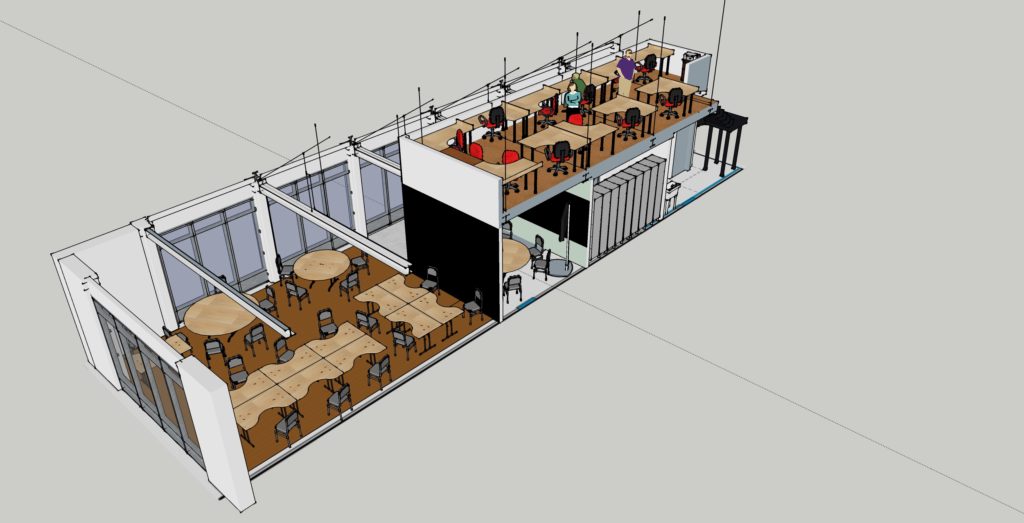
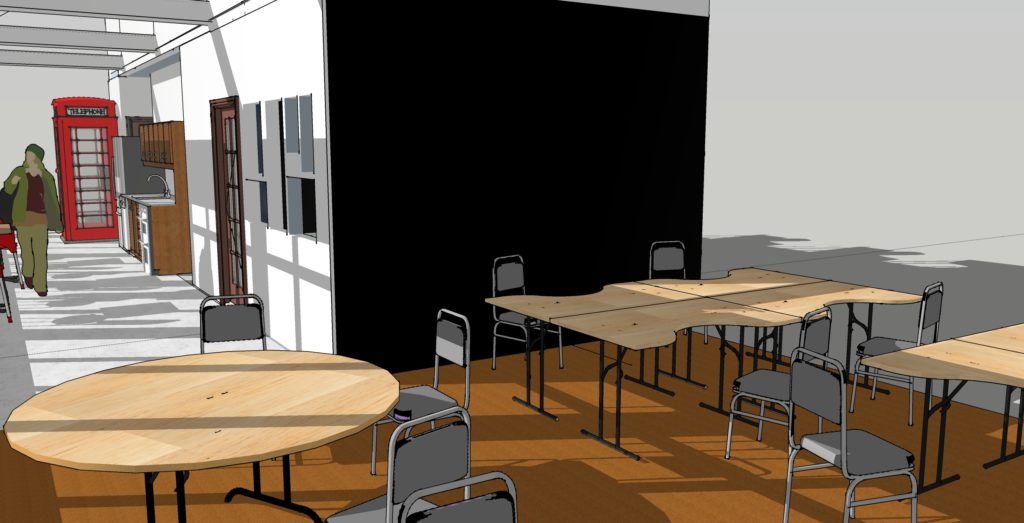
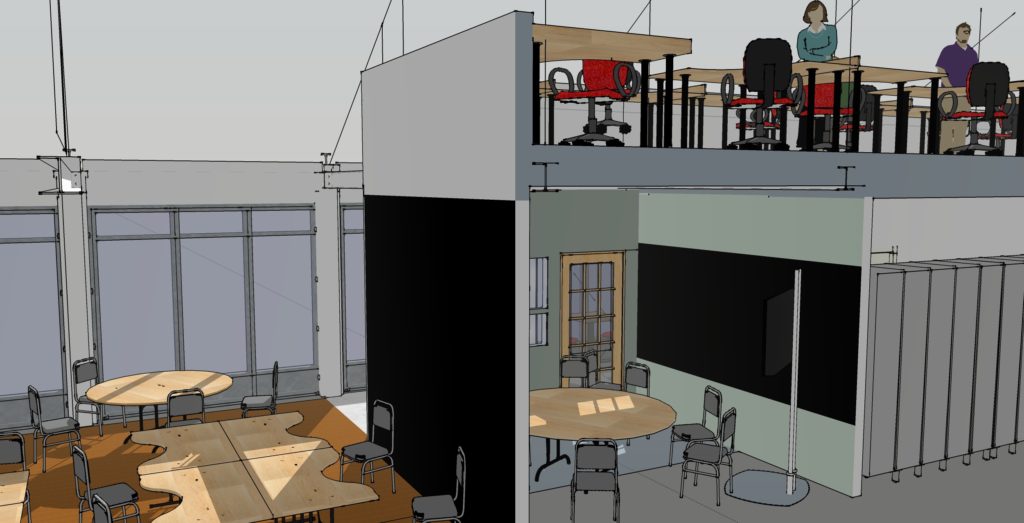
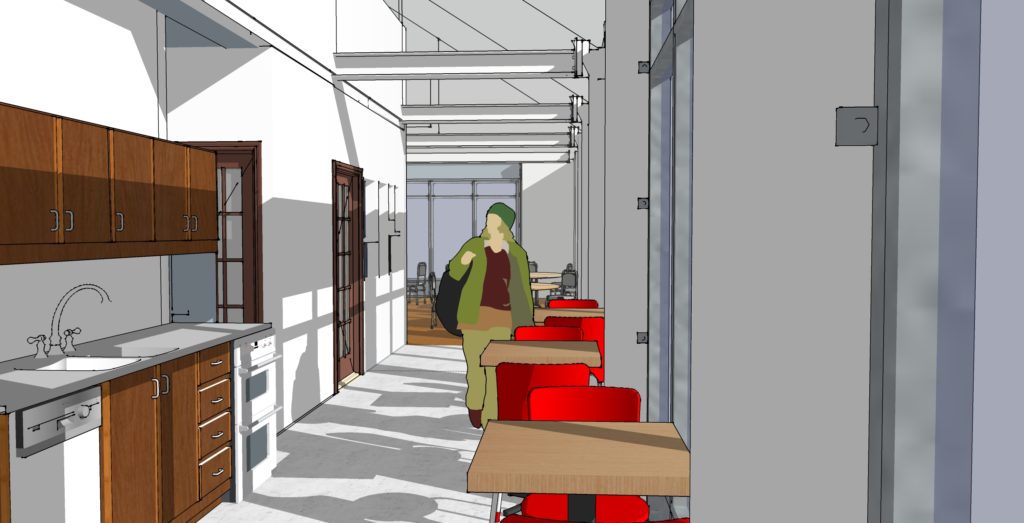
This looks amazing! The amount of time and thought that goes into a project like this though….wow.
Pingback: A 3D model you can play with – MinorOak Nottingham Coworking